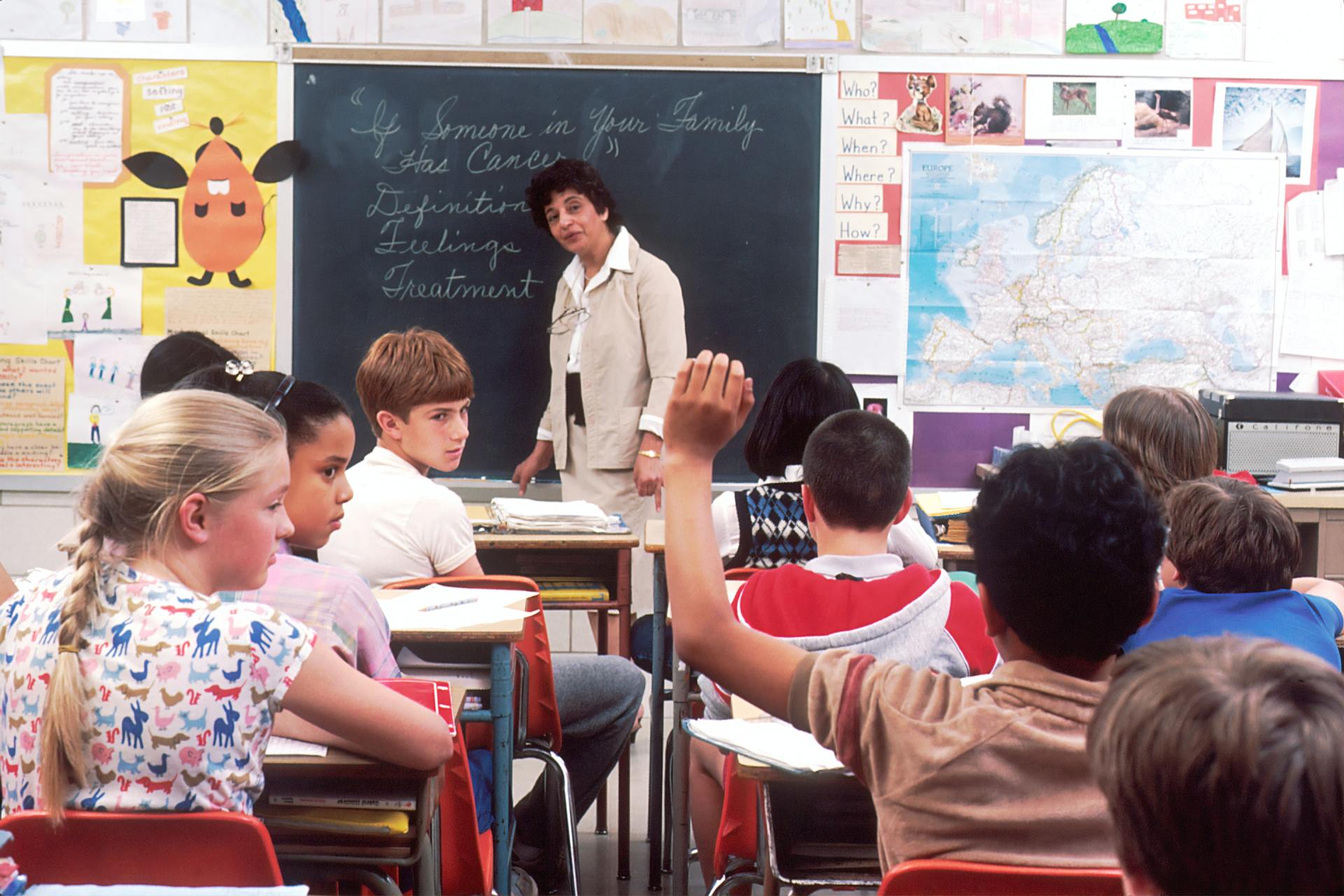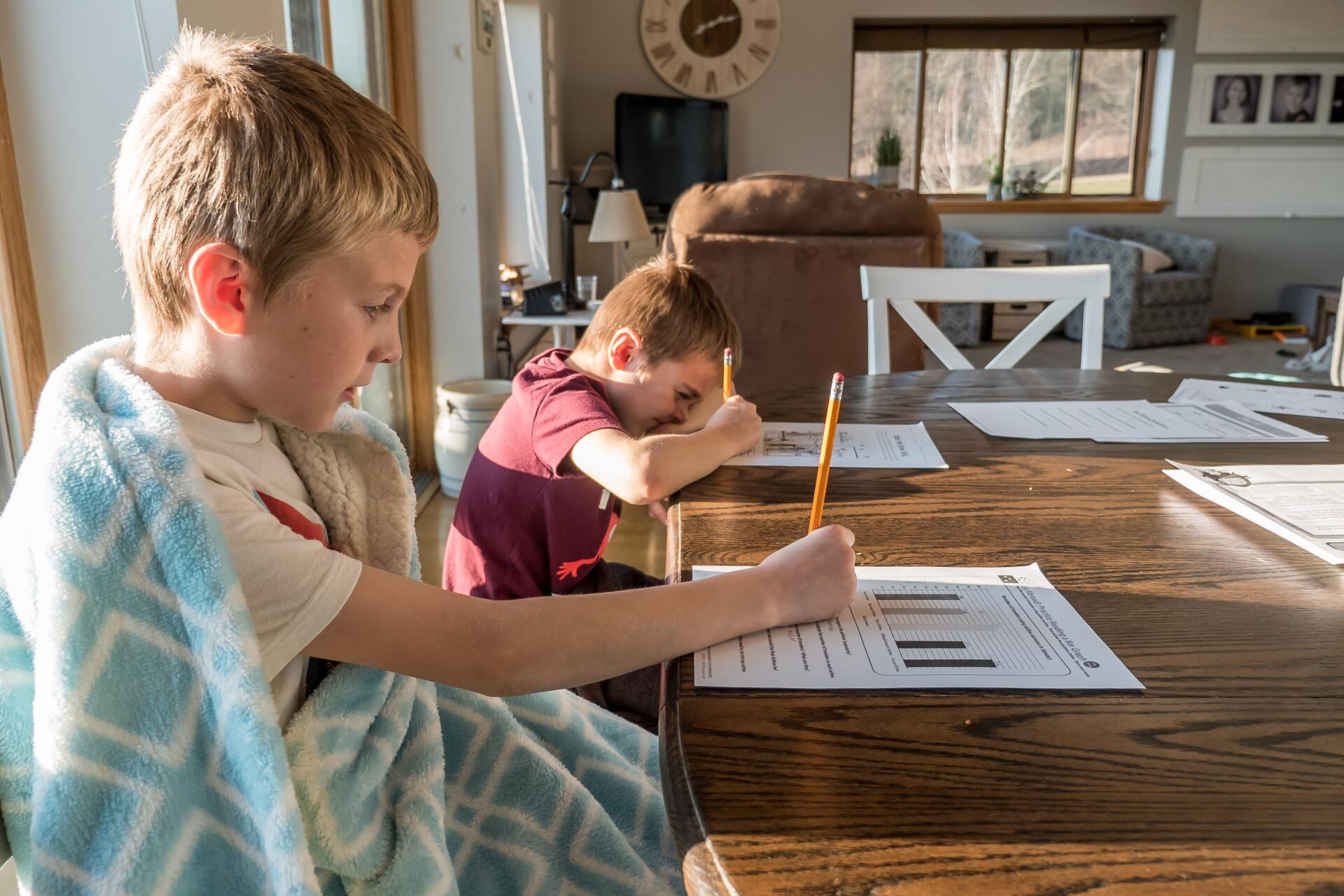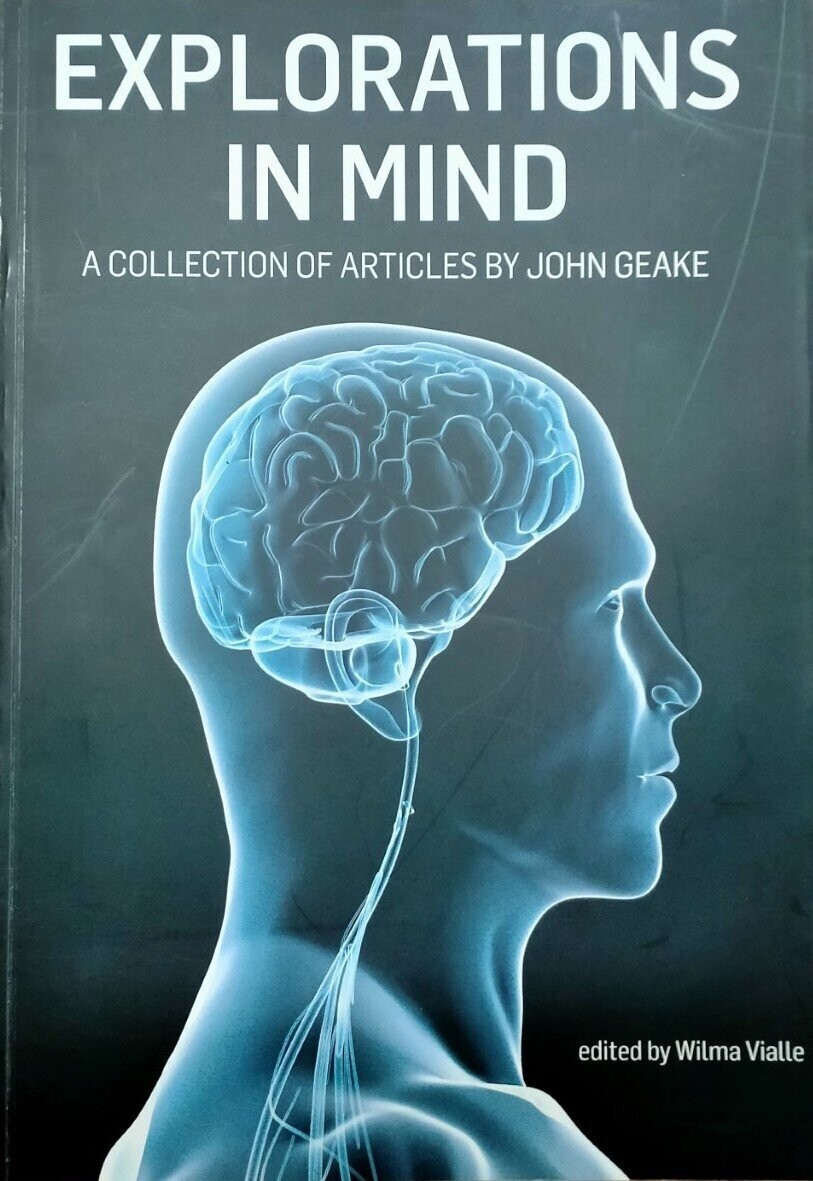0
Resources
Access resources to support gifted learners at school and at home
On this page
Resources for Parents

13 Aug, 2021
Can you identify with this scenario? Art and Lily know their preschool aged daughter, Harper, is gifted. Harper has been reading environmental text and picture books since she was two. She knows her numbers past 100 and can perform simple addition algorithms. The family have incredible dinnertime conversations, where Harper’s parents are continually surprised by her advanced vocabulary. Harper also comes up with original and creative ideas. Harper’s preschool educators haven’t commented on this precociousness but despite that, Art and Lily approach their local primary school to enquire about early entry, or an acceleration missing the first year of school. After a meeting with the principal, they are stunned to learn that the school will not condone any form of acceleration of this type. The preschool educators say that Harper is emotionally immature and has poor socialisation skills. The results of psychometric testing are ignored. What is early entry? Early entry is the enrolment of a child into a state-run or independent school earlier than the state’s legislated starting age. This is an accelerative option for children with highly developed natural abilities and/or an IQ in the gifted range. Early entry requirements for different states vary, and parents are encouraged to check their local gifted organisation and/or Department of Education for more information. State policies can support early entry as an accelerative option, but the uptake of this strategy is very limited in practice. What are the benefits of early entry? Can be an effective intervention with positive academic and social outcomes for young, gifted children if policy guidelines are followed (Diezmann, Watters, Fox 2001; Robinson 2004) Often avoids the need for a more complex grade acceleration later in a child’s schooling Meets the academic and social-emotional needs of a gifted child Opportunities to learn and socialise with intellectual equals rather than aged-related classmates How should it be managed? Most states have policies or guidelines to follow. Please contact your local school and/or your State Department of Education. What alternatives can schools provide to early entry? For a child that is gifted, displays school readiness, and prefers the company of older children and adults, there is no better alternative than early entry or acceleration. Some schools may offer an enriched curriculum. If this is the case, teachers should have completed preservice education, or post graduate studies, in gifted education. Schools, preschools, and educators should continually: Provide challenge, as part of an appropriate and stimulating curriculum Gain the skills and knowledge to create optimal and flexible learning environments Create a learning environment where a child’s potential, talent and natural abilities allow themselves to be revealed Recognise a child’s strengths and interests Respond to the readiness of learners Foster curiosity, creativity, imagination, and perseverance Extend children’s thinking What are some of the characteristics of young, gifted children? Ability to learn quickly Imaginative and creative Sophisticated sense of humour Compassion Deep sense of justice Engagement with thinking and learning new skills Why is a child’s social-emotional development often misinterpreted? Many educators do not believe that gifted children have age-appropriate or advanced levels of maturity and socio-emotional adjustment. This is based on misinformation and misinterpretation. Gifted children are perceptive, and this enhances connections with intellectual peers but disenfranchises them from age peers. Educators can interpret these interactions as evidence of immaturity, when in fact frustration and boredom can lead to antisocial behaviours (Diezmann, Watters, Fox 2001) The truth is, that failure to provide early entry may adversely affect the learning and social emotional development of gifted children. References Kaplan, S., & Hertzog, N. B. (2016). Pedagogy for early childhood gifted education. Gifted Child Today Diezmann, C. M., Watters, J. J. & Fox, K. (2001). Early entry to school in Australia: Rhetoric, research and reality. Australasian Journal for Gifted Education 10(2):5- 18.

13 Aug, 2021
Gifted children, like all children, deserve to receive an education in line with their abilities—an education that provides them with the opportunity to reach their full potential. To support your child to help them to achieve their full potential is giving your child your voice to help them on this journey. The United Nations Convention on the Rights of the Child (1989), along with statements from educational providers including Australia’s Mparntwe Education Declaration (Council of Australian Governments Education Council, 2019) specify the need for provision of opportunities to enable all students to achieve their full potential. Given this, it is reasonable to expect that your gifted child will be excited about and interested in school; that they will be allowed a reasonable amount of time to work with like-minded peers on material that challenges them; and will be taught by teachers who have some understanding of the needs of gifted students. What do I need to know to support my gifted child? Learn as much as you can from many sources of information; look at the websites of gifted organisations; read the policy statements from your school and education system in which your child is enrolled; find out about the common myths surrounding educating gifted children(Gifted and Talented Association of Montgomery County, 2010, Feb 24) and how to dispel these myths; investigate widely (National Association for Gifted Children, 2018) and consider attending gifted education seminars, webinars and conferences on gifted children and their education; learn some of the language and words that educators might use, and be prepared to ask them to define what they mean if you don’t understand during a meeting. Find out what education systems provide for gifted children – from opportunities such as selective schools to participating in challenges and competitions, and everything in between. How should I approach my child’s school? Start by making an appointment, let them know the subject of the meeting, how long you need and who you might like to attend the meeting with you. Try to meet the classroom teacher/s first, before meeting with the principal. Be prepared to provide background information in advance of the meeting to give the school a chance to do some preparation. This recognises the professionalism of those teachers you are meeting and reduces the need for them to respond to you without preparation. Consider whether you would like your child to attend the meeting – this will depend on a number of factors, including the age of the child, the child’s level of confidence, their capacity to verbalise their needs and the comfort level of the people you are meeting. If you think that having a support person with you for the meeting would be helpful, do not be afraid to advise that this person will also be attending. If the first meeting with the class teacher is not as successful as you would like, think about who else might be involved in a future meeting, such as: grade supervisors, the principal, a gifted education specialist, or an educational psychologist. What should I do to prepare for the meeting? Apart from knowing enough to talk confidently about your gifted child and their needs, prepare and plan your meeting. Know what you want to achieve (making sure that this matches with your child’s desires) and how you are going to put your case to achieve it. Practice at home, in front of a mirror, moderate your voice pitch – don’t shout, but don’t whisper, and know your weak points – what might be an emotional trigger and where you might need to pause for breath. Don’t be afraid of silence in your meeting while you gather your thoughts. Anticipate objections and have prepared responses – the objections will probably be the common myths and misconceptions about gifted children and their education. Don’t forget – you don’t have to do this on your own – you are absolutely able to take a support person with you, and have someone help you prepare. Find out what you can about the people you are meeting and analyse your own values and beliefs in respect of what you are advocating for. And what about in the meeting? Approach the meeting positively and build a relationship with those with whom you are meeting. Try to remain calm and speak confidently. Be prepared to identify how you want to move forward: what are you hoping to achieve for your child? What sort of time frame can you agree upon and when will you meet to follow up? You may like to request a copy of the meeting outcomes in writing and show thanks to the people with whom you met. Where can I get support? The education system in which your child is enrolled may have staff who are gifted education specialists and the school or system may have specific programs, groupings or structures for gifted students. Every school has access to above-age curriculum, whether on campus or online, and every teacher should be able to provide the right curriculum for your child, although for highly gifted students acceleration may need to be considered. All Australian states and the ACT have gifted organisations – join the one in your state so you can benefit from the support and information that they can provide. What are my options if working with the school is unsuccessful? If advocacy with the school is unsuccessful you could consider contacting those responsible for the education system in which your child is enrolled; or you could explore other schooling options, including home schooling. You may want to contact your local association for the gifted for advice and support. References Council of Australian Governments Education Council. (2019). Alice Springs (Mparntwe) Education Declaration . Melbourne, Australia: Australian Government. Retrieved from http://www.curriculum.edu.au/verve/_resources/National_Declaration_on_the_Educational_Goals_for_Young_Australians.pdf . Gifted and Talented Association of Montgomery County. (2010, Feb 24). Top ten myths in gifted education [Video file] . https://youtu.be/MDJst-y_ptI National Association for Gifted Children. (2018). Parent tip sheets . National Association for Gifted Children,. Retrieved 14 June from https://www.nagc.org/resources-publications/resources-parents/parent-tip-sheets United Nations Convention on the Rights of the Child. (1989, November 20). https://www.ohchr.org/en/professionalinterest/pages/crc.aspx

13 Aug, 2021
Is your child showing the ability to learn at a level above children of the same age? Have you ever wondered if they could have the opportunity to learn at their preferred level at school? You are not alone in thinking this. The practice of matching the level, complexity and pace of curriculum to the individual student by moving them through an educational program at a faster rate than usual, is known as acceleration (Salkind, 2008). Decades of research show that thoughtful and carefully planned acceleration benefits a gifted student academically and does no harm socially or emotionally (Assouline et al., 2015a, 2015b; Colangelo et al., 2004a; Colangelo et al., 2004b; Culross et al., 2013; Feldhusen et al., 1986). However, acceleration is often underutilised by schools, largely due to many myths and beliefs that are simply unfounded (Gifted and Talented Association of Montgomery County, 2010, Feb 24). There are many methods of acceleration (Department of Education, 2012; Ronksley-Pavia, 2011), some examples include: Grade-skipping, where one or more full grade levels are omitted, for example a student may move from grade 3 directly into grade 5 Early entrance to school, where a student begins their schooling (usually Kindergarten) at a younger age than normal Grade telescoping where students work through the curriculum of two or more grades in less than the normal number of academic years Subject-based acceleration, where a student does the work of a higher grade level for a particular subject either: In their own classroom but working on higher grade material By attending a higher-grade classroom for that subject Through dual enrolment - also enrolling in a higher level of schooling for a particular subject, e.g. studying a university subject while still in high school How do I know if grade or subject acceleration is a good choice for my child? For grade skipping, ideally you will need to have your child assessed by an educational psychologist who is skilled in working with gifted children. That person will administer an IQ test for your child and provide you with a report. The report may include recommendations for a subject acceleration or a grade skip. In general, grade skipping will require a full-scale IQ of 130 or more, with the student demonstrating advanced ability across all areas. Everyone involved - you, the school and your child should all be in favour of acceleration. In particular, the receiving teacher/s should be supportive and prepared to help the student settle into the new classroom and bridge any knowledge gaps they may have. Your child should be free of any major social and emotional problems and should be motivated and persistent in their approach to learning. Note that sometimes the school may perceive behaviour issues or failure to engage ‘normally’ with same age classmates as socially and emotionally immature and resist the idea of acceleration. The behaviour and ability to form relationships may well improve if the child is appropriately placed in a higher grade. The child should be in good health. A child’s physical size doesn't matter unless the child wishes to engage in competitive sport. A trial period in the proposed receiving year level is highly recommended to ensure the accelerated grade level is the correct placement. How many grades should a child skip? The child should be performing above the average of the class into which they accelerate. A trial process will help to clarify the appropriate placement. If the child is accelerated into a class and they are achieving at a level well above what is expected for that grade, the acceleration is unlikely to meet their needs academically, socially or emotionally. When should a grade skip take place? Ideally, at the end of a school year - but the move to the higher grade may also be considered at the end of a school term. Generally, it is advised to avoid skipping the ‘transition years’ - the years when a student may have the opportunity for student leadership roles or the first year of a new school structure that will have considerably different routines (eg, completing year 6 and year 7 are often seen as important). Will a grade skip meet all my child’s needs? Probably not! Your child may need additional acceleration - whether another grade skip or subject acceleration or more challenge provided by the classroom teacher of some subjects. Can a grade skip be reversed? A trial period of at least six weeks, with regular reviews involving all stakeholders (e.g., child, teachers, parents, senior staff, school psychologist) is recommended. If it is considered best for the child that they return to their original class, then that should happen and be supported in a positive way. How will the school decide if my child may be accelerated? The school should use an objective tool such as the Iowa Acceleration Scale to assist with making the acceleration decision. Decisions made should involve input from a team which ideally includes parents, current and receiving teachers, school leadership, educational psychologist and your child. A team approach based on solid evidence and research about the benefits of acceleration should form the basis of good decision making. Will my child benefit from acceleration? Extensive research shows that well planned and well supported acceleration for gifted students benefits those students academically in both the short term and the long term. Acceleration helps students stay engaged in school and develop essential skills to tackle more difficult learning material and cope with not succeeding the first time. Accelerated students often achieve more highly than students of the same age and ability who are not accelerated. They often achieve more highly than older students in the class into which they are accelerated. Research also indicates that accelerated students cope socially and psychologically; often gifted learners are socially and emotionally more mature than same-age students and acceleration can provide access to classmates whose interests and stages of friendship development are closer to theirs. References Assouline, S., Colangelo, N., & VanTassel-Baska, J. (2015a). A nation empowered: Evidence trumps the excuses holding back America’s brightest students (Vol. 1). The University of Iowa. Assouline, S., Colangelo, N., & VanTassel-Baska, J. (2015b). A nation empowered: Evidence trumps the excuses holding back America’s brightest students (Vol. 2). The University of Iowa. Colangelo, N., Assouline, S., & Gross, M. U. M. (2004a). A nation deceived: How schools hold back America's brightest students (Vol. 2). The University of Iowa. Colangelo, N., Assouline, S., & Gross, M. U. M. (2004b). A nation deceived: How schools hold back America's brightest students (Vol. 1). The University of Iowa. Culross, R. R., Jolly, J. L., & Winkler, D. (2013). Facilitating Grade Acceleration: Revisiting the Wisdom of John Feldhusen [Article]. Roeper Review , 35 (1), 36-46. https://doi.org/10.1080/02783193.2013.740601 Department of Education, S. a. E. (2012). Gifted Education Professional Development Package . Canberra, Australia: Australian Government. Retrieved from https://www.dese.gov.au/collections/gifted-education-professional-development-package Feldhusen, J. F., Proctor, T. B., & Black, K. N. (1986). Guidelines for grade advancement of precocious children [Article]. Roeper Review , 9 , 25-27. https://doi.org/10.1080/02783198609553000 Gifted and Talented Association of Montgomery County. (2010, Feb 24). Top ten myths in gifted education [Video file] . https://youtu.be/MDJst-y_ptI Ronksley-Pavia, M. (2011). A report on acceleration for the gifted: What does it mean? Gifted , February (159), 8-11. Salkind, N. J. (2008). Acceleration. In N. J. Salkind (Ed.), Encyclopaedia of educational psychology (Vol. 1, pp. 4-8): Sage.
Resources for Parents and Teachers

By Lynne Maher
•
06 Apr, 2022
Reading is an immersive, joyful and engaging activity which can enhance our communication and our ability to empathise and inhabit different worlds and perspectives. As an English teacher, parents often tell me: “My child HATES reading. How can I encourage them to read more? How many hours per day should they be reading?” In our fast-paced, competitive and technologically enriched world, our reading may be interrupted by social media, family members, classmates and other priorities. So, how do we encourage curiosity and wide reading and yet account for the diversity of our students and families ’lives and contexts? We can start from the simple notion: reading is everywhere . Each moment in our daily life represents an opportunity to develop our literacy, spelling, vocabulary. We read when we move around in our daily lives, stream films and series, watch the news and ponder text messages, and while we may well be frequently interrupted, the reading continues through multiple platforms as we rush through our busy days. Starting from this point, I list below some simple, practical strategies for nurturing literacy for families – students, parents and guardians. The strategies can also be useful for teachers looking to embed literacy and immersive activities across topics and disciplines. 1. Talk about words, their meaning and origin How is reading, language and the beauty of words a part of your daily life? Talking about words and thinking actively about vocabulary helps foster curiosity and develops a broad vocabulary. Whether you are watching a film, recent news or discussing your day with your family (or students in your class!), try to actively reflect on words you use in discussions. This can be as simple as your child telling you: “The teacher gave me good feedback”, and you responding, “I am so glad you found the feedback constructive”! Simply responding with a synonym or a more nuanced term will allow you to expand your vocabulary through discussion. 2. History of words: delving into Latin and Greek! Gifted students have immense curiosity about the world and different areas of inquiry. Another strategy to nurture literacy and expand vocabulary is to think about the history (etymology) of certain words we use on a daily basis and explore their Greek and Latin foundations. If your child enjoys monsters and superheroes, they may be quite keen to know what monere or super mean in Latin! Explore the most common words tied to your child’s interest and find out their history! Encouraging the joy of linguistic discoveries can turn daily conversational items into little gems of discovery which may inspire your gifted child or student and consequently build their vocabulary and linguistic proficiency. 3. Embrace the digital: on the use of apps As teachers and parents, we are also a crucial part of the learning journey – and educational applications can help us upskill (and possibly develop newfound linguistic passions!). There are numerous free and accessible apps which are basically digital versions of prominent dictionaries (Oxford, Cambridge, Merriam-Webster). Having these dictionaries on the devices you use often will make it easier to explore and discover new words and discuss their meaning. Similarly, a digital Thesaurus app can provide numerous synonyms to enrich your daily vocabulary as you communicate with your family or students. 4. Make it fun – embracing games Today’s computer games can be elaborate, enriching and engaging, creating worlds filed with educational content and potential! They can also help expand our vocabulary and provide the much-needed differentiation, acceleration and enrichment for gifted children. There are numerous simulations, adventures, strategy games and others which build language skills, including reading and writing, in a positive and engaging way. Choosing the right content and making learning fun will allow your child or students to use screen time actively and learn in the process. This is particularly important for building confidence in reading, writing and English as a subject and creating an environment where children can learn and be comfortable making mistakes! That is how we learn – and maintain that growth mindset which allows us to grow. 5. Watch films and series with English subtitles This is a simple method – when streaming your favourite films or series, use English subtitles! Most popular streaming platforms have readily available quality subtitles which follow closely what is said on the screen or effectively translate from other languages into English. Watching visual texts and following the written texts seen in subtitles can be a helpful way to include more reading into your daily routines. 6. Provide variety: reading through podcasts and audiobooks Providing multiple means of presenting information is an important aspect of inclusive education. Starting from this premise, another way to promote literacy development and motivation is to provide variety! For example, podcasts are becoming more popular than ever in our busy, fast-paced lives enriched by technology. Easily accessible on our devices, podcasts can be another great learning tool when coupled with the transcript. Most podcasts have accessibility options which include a good transcript – allowing your child / student to easily follow along! Again, pairing what is heard with what is written could also motivate and allow greater focus. Similarly, audiobooks are a great way to maintain engagement with a book – paired with a physical copy of the book or an eBook version may provide that interesting variety and alternative ways of accessing the content. 7. Build on interests and passions The final step is simple enough – we can always build on our children’s / students’ interests and passions. If the goal is to improve overall literacy, expand vocabulary, or become a more confident and adaptive communicator, building on your child’s or student’s interests can make learning fun, effective – and nurture that key ingredient needed for success – motivation! I hope you find these strategies useful – feel free to get in touch and share your own ideas and insights on supporting literacy across contexts. Dr Maja Milatovic (MA, MEd, PhD) AAEGT members can access our members area for a suggested reading list for grades 3 -6. Not a member? Find out how to become a member NB: Please note that this article only represents the views of the author(s), and is not necessarily representative of the views of the Australian Association for the Education of the Gifted and Talented.

17 Feb, 2022
The Australian Association for the Education of the Gifted and Talented believes that gifted learners need to be included in school and classroom planning every day of the school year. Themed days or weeks in the annual school calendar provide an opportunity to nurture, support and promote the inclusion of gifted learners. Harmony Day, Science Week, National Tree Day, Clean Up Australia Day and National Day of Action against Bullying and Violence are some examples of opportunities to be intentional about involving gifted learners. In 2021, the Australian Association for the Education of the Gifted and Talented asked three of our members who are Early Childhood Specialists to respond to the theme for Children’s Week: “Children have the right to choose their own friends and safely connect with others” These are their responses. Article 1 Children have a right to choose their own friends and safely connect with others By Elizabeth Barns The need for friendship endures across our life span, and positive relationships can have a significant effect on our wellbeing and feelings of self-worth. The skills of making and maintaining friendships begin in early childhood. These relationships usually occur with those who share our interests, and they tend to be transient and play focused. As we grow, we look for enduring friendships with those who have similar core values, personality, and interests to ourselves. Our education system, that groups children according to age, assumes that meaningful learning and friendships will most likely occur within this peer group, though as adults we understand that respectful and reciprocal relationships rarely only occur with those that are the same age as ourselves. Gifted children tend to have more mature play interests and higher expectations of friendships than their same aged peers. Hollingworth (1942) and Whitmore (1980) both identify that the gifted may have difficulty “finding peers who truly understand and appreciate their unusual and advanced perceptions” (Lovecky, 1992, p.18). They can often have more in common with older peers, both socially and cognitively, but due to limited opportunities with a diverse peer group, gifted children can be left feeling socially inadequate, frustrated and isolated. As we celebrate Children’s Week 2021, we reflect on the theme ‘Children have a right to choose their own friends and safely connect with others.’ For gifted learners this requires us to think innovatively. In order to meet the cognitive and social needs of the gifted, we need to listen to their voice and offer them choices, that include challenging opportunities that meet the child at their point of need and transcend age and grade. Gifted children are competent and capable, and provide valuable insight into their own unique needs. We need to acknowledge that children have rights and we, as the adults, have responsibilities. Providing all children, including gifted children, with positive levels of engagement and meaningful social connection with like-minded peers, is a societal responsibility that requires a more innovative and dynamic educational structure. References Hollingworth, L. S. (1942). Children above 180 IQ Stanford-Binet: Origin and development. World Book Company. Lovecky, D. V. (1992). Exploring social and emotional aspects of giftedness in children. Roeper Review, 15(1), 18-25. Whitmore, J. (1980). Giftedness, conflict, and underachievement. Allyn & Bacon. Elizabeth Barns BEd (ECh), MEd (SpEd). Member of the AAEGT Elizabeth Barns holds a Bachelor of Education (Early Childhood) and a Master of Education (Special Education including gifted). She has been an early childhood educator for more than 25 years, as a teacher and director in long day care and preschool. She has taught in vocational education and higher education for the last 15 years. She is currently an academic with a focus in early childhood, gifted and special education, and is on the committee for Gifted NSW. Article 2 Children have a right to choose their own friends and safely connect with others. By Dr Kerry Hodge Three-year-old Billy keeps to himself at preschool, which causes his educators some concern. They try to involve Billy with other children, with limited success. However, his parents are not so worried. They report that Billy is very popular as a playmate with the friends of his 5-year-old brother at home, where he successfully joins in the give-and-take of ideas as their play evolves. Billy’s situation highlights the barriers that age-based structures can create for gifted children in terms of opportunities to make and keep friends. It’s hard to have a friend if no one shares your interests, especially if the other children your age just want to run around together, while you have firm ideas about how to build a spaceship that’s going to fly to Mars. It’s no wonder that Billy chooses to sit and make intricate drawings about space exploration instead at preschool. Ability grouping, with its opportunity for like minds to become friends, is rarely an option below school age. When it does occur, as a gifted playgroup or perhaps an enrichment class, it is usually in the community and only once a week. However, friendships can develop there, especially if families of compatible children choose to get together informally outside the scheduled times. What options do early childhood educators have? Preschools and childcare centres must comply with mandated adult-to-child ratios based on age. This influences structures that make children’s movements between age groups tricky. Some early childhood settings meet regulations through ‘family groupings’ where ages are mixed and younger and older children spend most of their time together. In this structure, younger gifted children can easily choose to associate with children who offer a better social match, and age barely matters for the children involved. Of course, the oldest children cannot gravitate ‘upwards’, but they may emerge as leaders for younger children willing to be led in play scenarios at times. Most settings separate age groups. Different rooms for the ‘fours’, ‘threes’, ‘twos’ and babies works well for many children, perhaps with some mixing outdoors. For a gifted child like Billy, some flexibility is required. If there is a ‘like mind’ in the older group whom Billy could spend time with, he could gain some companionship while playing at a satisfying level of complexity. A bonus is motivation to practise his social skills in order to retain this friendship. If this arrangement works well and numbers permit, Billy could move permanently to the older group. The drawback from this ‘grade-skip’ is that eventually a decision must be made about the following year. Could Billy be allowed early entry to school, or must he ‘repeat’ a year in the four-year-olds’ room? This could be a return to the earlier mismatch unless some of his age peers have matured significantly! As happens with older ages, acceleration is not viewed favourably by most early childhood educators. Social and emotional reasons are commonly cited against early entry, even when the child clearly is intellectually ready for the school curriculum. There is a tendency for educators to assume that a child, like Billy, who plays alone is lacking social skills and to recommend another year of preschool or childcare while their social skills develop. It is important that educators find out from parents about the child’s friendship choices outside the early childhood setting. A child who seeks and is accepted by older children in the extended family or neighbourhood is certainly ready to meet the wider world of school and have access to a wider pool of potential friends. Gifted young children are in good hands when their early childhood educators understand their social needs, communicate well with families and find ways to promote opportunities for access to children who could become their friends. Kerry Hodge PhD. Member of the AAEGT Dr Kerry Hodge has worked in early childhood education as a teacher, consultant, lecturer and researcher, with a particular focus since the 1990s on the education of young gifted children. In 2009 she was awarded a Churchill Fellowship to investigate overseas programs for gifted preschoolers and teacher training in early gifted education. Kerry is currently an Adjunct Fellow in the School of Education at Macquarie University in Sydney. Article 3 Children have a right to choose their own friends and safely connect with others By Dr Rosalind Walsh Childhood is the only period of our lives when it is assumed that our friends will be people whose birthdays fall within 18 months of our own. Well-meaning early childhood educators have often promoted “we’re all friends at preschool”, failing to realise that this takes away choice from young children, and forces them to like everyone who happens to share a classroom with them. The situation can be even more fraught for young intellectually gifted children whose conceptions of friendship can be more advanced than their same age peers. In the early childhood years most children find friends based on similar play preferences. “You like cars. I like cars. Let’s play cars together.” For most children, the fact that they are at similar developmental stages would tend to suggest that they will have similar interests. However, this is not true for all children and particularly not true for children with advanced development. Finding a like-minded peer to play chess with in preschool is going to be a stretch. And may well lead to frustration when age peers find it difficult to understand complex rules. This may lead to emotional outbursts from a gifted child who can’t comprehend how their age peer can’t grasp that the knight moves in a particular way. In turn this can lead to a perception that young gifted children are emotionally immature, when in fact, what we are seeing is a child coping with a mismatch between their intellectual and social-emotion skills. Imagine explaining to a colleague, over and over again how a process works, only for that colleague to stare at you blankly. It would be hard enough for an adult to understand and handle sensitively. Now imagine a four year old in this situation. Grouping children by age has always been a matter of convenience (babies need to sleep at a certain time, play materials may not be safe for younger children etc.). Some enlightened early childhood services have moved away from age-based grouping to allow siblings to interact and children to find like-minds and friends across a whole setting. For some gifted children, their closest intellectual peer may be the teacher. Other gifted children sense their own difference from a young age and are attracted to other children who don’t appear to fit in, making friends with other children who may have been sidelined from the dominant peer-group. What we know from decades of research in gifted education is that finding a ‘true’ friend is often a gifted child’s highest priority. We all want someone to understand and value us. We also know that gifted children tend to make friends with older children, which is why it is so important that children have access to a range of age mates. We also know that healthy social-emotional development depends on having at least one good friend. Often schools will split up children who are very close, hoping that this will encourage them to make more friends, when in fact that one good friend is all that the child needs. I get on with the people I work with. I appreciate their variety of talents and their dedication. This doesn’t mean I want to invite them over for dinner and hang out on a Friday night. Nor do I restrict my friendship group to all those who happen to be turning the same age as me this year! We need to learn to be kind to everyone, but we certainly don’t need to be friends with everyone, and children have the right to choose their own friends. What can educators and parents do? Don’t assume that children will only make friends with others of the same age. Allow and encourage cross-age friendships. Provide opportunities for children of different ages to mix. Community playgroups allow for children 0-5 to mix together. In later years, community groups such as Girl Guides and Scouts have groups that operate over a range of ages. Allow flexibility with age-based rooms in early childhood setting. Provide communal space in early childhood settings where child of all ages can mix. Provide invitational curriculum opportunities where children, regardless of age, can take part based on their intellectual development. Recommended reading Gross, M. U. M. (2002, May). ‘Play partner’ or ‘sure shelter’: What gifted children look for in friendship. SENG Newsletter, 2(2), 1–3. Retrieved November 24, 2010 from http:// www.sengifted.org/articles_social/Gross_ PlayPartnerOrSureShelter.shtml Grant, A. (2013). Young gifted children transitioning into preschool and school: What matters?. Australasian Journal of Early Childhood, 38(2), 23-31. Shore, B. M., Chichekian, T., Gyles, P. D., & Walker, C. L. (2018). Friendships of gifted children and youth: Updated insights and understanding. The Sage Handbook of gifted and talented education, 184-195. Rosalind Walsh PhD. Member of the AAEGT Rosalind completed her PhD at Macquarie University’s Institute of Early Childhood. Her research focused on how young gifted children answered higher order thinking questions during picture book reading. NB: Please note that these articles only represent the views of the author(s), and are not necessarily representative of the views of the Australian Association for the Education of the Gifted and Talented.

12 Jan, 2022
Parents, educators and policy makers sometimes assume that all clever children, having supposedly won the genetic lottery, will invariably enjoy school, learn effortlessly, succeed academically and thrive emotionally. It is sometimes erroneously presumed that high intellectual ability alone is so protective that gifted children do not face challenges in the way that others do, or that they will ultimately be successful in life, regardless of what they may have experienced while at school. Sadly, this is not always the case. Not all intellectually gifted children achieve high grades, or match the gifted stereotypes, and indeed some gifted children defy them. Some are every day silently struggling with an unidentified disability which may negatively affect their learning, their academic success and their general wellbeing. Some read slowly and painfully, forget their times tables, or struggle to record their thoughts in writing. Intellectual giftedness can sometimes be complicated or compromised by unexpected challenges. This counterintuitive and contradictory constellation of risk factors may cause dissonance in traditional educational environments, sometimes leading to avoidable academic failure and emotional distress. Here are some insights derived from over 16 years of GLD Australia members’ experience with this neurodevelopmental paradox stemming from the intersectionality of, and conflict between, intellectual giftedness and some form of non-intellectual disability. While it is acknowledged that there may be several domains of giftedness (eg, creative, social-emotional and physical), what follows will deal only with intellectual giftedness as, in over 15 years, that is the only domain of giftedness which has ever prompted enquiries to GLD Australia. Who are gifted learners with disability? Children of high intellectual ability who also have one or more non-intellectual disabilities may be described as ‘gifted learners with disability’ ( GLD ). The term GLD encompasses intellectually gifted children who have one or more additional conditions which may affect learning or academic performance, including: specific learning disorder such as reading disorder ( dyslexia ), disorder of written expression (sometimes erroneously called dysgraphia ) or mathematics disorder ( dyscalculia ) communication disorders such as developmental language disorder (previously known as specific language impairment ) ADHD , especially the predominantly inattentive presentation ( PIP ) thereof, without visible symptoms of hyperactivity, impulsivity, defiance, or disruptive behaviour autism , especially so called ‘high functioning’ autism Level 1 (previously known as Asperger’s syndrome) motor disorders, such as developmental coordination disorder which may affect handwriting/penmanship (sometimes still called motor dysphraxia or [erroneously] dysgraphia physical disability , including chronic pain mental health needs such as depression and anxiety disorder – which some parents see as ‘parasitical’ disabilities, in that the child began to experience them only as a result of starting school and realising that they were not able to learn to read or write, or do maths or pay attention or make friends as effortlessly as their peers None of the conditions listed above is related to intelligence. Giftedness does not preclude disability – and vice-versa. A high IQ is protective against nothing but a low one . Intellectual impairment is the only disability which cannot logically co-occur with intellectual giftedness; however, intellectual giftedness alone will not vaccinate a child against any of the non-intellectual forms of disability, or against academic underperformance or mental health needs. In short, GLD children combine high cognitive ability with some form of co-existing disability. The GLD child is thus one who is intellectually gifted ‘with something else going on’ – something which: emanates from within the child (rather than being environmentally imposed), cannot be otherwise readily accounted for or explained, and can sometimes interfere with school achievement and/or with social-emotional wellbeing. GLD children are sometimes referred to in the research literature by a variety of abbreviations: in the UK as ‘ DME ’ (dual/multiple exceptionality), in Europe as ‘ TE ’ (Twice Exceptional), and in the US as ‘ double-labelled ’, ‘ 2e ’ or ‘ 2E ’ (twice-exceptional) – the two seemingly conflicting and opposing ‘exceptionalities’ being the giftedness on the one hand and the non-intellectual disability on the other. Here we use ‘ GLD ’ (gifted learners with disability), not only because it is more accessible and descriptive of the actual condition, but also because the inclusion of the word ‘disability’ may serve as a reminder of the legislative protection to which GLD children are arguably entitled in Australia. ‘Disability’ in this context is defined very widely (as in Australian disability discrimination legislation) and is not confined to those few disabilities which some education departments have selectively tweezered out for additional funding. Disabilities may be visible or non-apparent. Sometimes, the ‘disability’ is euphemistically referred to as a ‘difference’, ‘difficulty’, ‘deficit’, ‘challenge’, ‘relative weakness’ or even an instance of so-called ‘neurodiversity’, but for present purposes, the word ‘disability’ will be used because it is the most accurate and legislatively meaningful term in this context. Sometimes a GLD child is described as ‘gifted with a learning disability ’, but the latter expression may in fact be a semantic misnomer. Some GLD children do not have a ‘ learning disability ’ at all. Instead, they may have a performance disability. Said one such child, “No, you can’t say that I have a learning disability. I have no trouble learning new things for the first time. I have no trouble remembering what I have learned. What I do have is a ‘ proving in limited-time exams that I’ve actually really learned it ’ disability.” The latter, performance disability, could of course be due to many causes – ADHD, handwriting disability, or a slow processing speed, to name a few. It could also be the result of difficulties which fall short of the legislative definition of ‘disability’, but which can nevertheless result in barriers for the child in writing limited-time exams. Such causes include ‘instructional casualties’ (having never been correctly taught the content in the first place), prolonged illness, and home or family issues. There is currently no definitive research on the percentage of intellectually gifted children who are struggling with a (sometimes undetected) disability. Exact numbers are hard to determine, as the estimated prevalence of GLD children varies according to each researcher’s own definition of ‘gifted’ on the one hand, and demarcation of the scope of the co-occurring disability on the other. Matters are complicated by the fact that a way must be found to extract the percentage of children with intellectual impairment from total numbers of children with disability in whatever calculation is used. There has been some speculation that the incidence of GLD children is gradually increasing as psychologists and educators become better skilled at identifying GLD. No federal or state instrumentality collects data on this population, since GLD children constitute a unique minority within each of two other minority populations – intellectually gifted students on the one hand, and students with non-intellectual disability on the other. What are some characteristics of GLD children? GLD children may exhibit dual strengths and struggles. On the one hand, they may be gifted in identifying and understanding complex relationships, using sophisticated problem-solving strategies, and generating and analysing novel ideas. They may have exceptional verbal expression, featuring unexpectedly advanced vocabulary (which may impress teachers, but which may also negatively affect communication with similar-age, non-gifted peers). They may exhibit a thorough understanding of the potential consequences of a seemingly small event. Other typical gifted characteristics may include an active imagination, a wide variety of surprisingly mature interests or opinions, extensive general knowledge, and flashes of furious brilliance when faced with difficult, abstract problems. Indeed, GLD children may be intellectually astonishing. At the same time and on the other hand, however, the mechanics involved in reading, spelling, written expression, penmanship, rote memorisation, basic computation, and other ostensibly simple and basic academic tasks (particularly timed tests), or even physical tasks such as tying shoelaces, may prove unnecessarily demanding and present seemingly insurmountable difficulties. GLD children frequently have poor time management and organisational abilities, and/or inconsistent attention issues. They may perform poorly under pressure, or they may appear vague or preoccupied, and they may have difficulty following simple step-by-step instructions, or have ongoing issues with social communication and peer relationships. GLD children may sometimes achieve outstandingly high results in academic competitions outside of school yet be receiving mediocre outcomes on everyday school assessments and tests. They may excel on multiple choice tests yet struggle when asked to compose answers on a blank page – or sometimes the other way round. Their unique abilities can be underestimated because they may have unrecognised gaps in learning. Their school grades do not reflect their conceptual understanding, and this mismatch may have a long-term impact on their self-esteem and mental health. Because GLD children can be expected to be developing simultaneously both ahead of and behind age peers, being GLD is somewhat akin to being the rope in a tug-of-war: the GLD child may be pulled in one direction by their high IQ and their intense desire to pursue their intellectual interests, but at the same time they may be pulled in the opposite direction by their disability which may inhibit their capacity to develop their gifts into talents – to transform their high intellectual potential into high academic performance. How do parents and teachers identify GLD children? GLD children are often hard to identify. Perhaps because they usually don’t fit the stereotype of either a gifted child or a child with disability, many GLD children go unrecognised or are not formally identified until relatively late in their academic career. The most common and significant feature of a GLD child is uneven or inconsistent academic performance which is unexplained and unpredictable. From a teacher’s perspective, it is important to record whenever a child demonstrates surprisingly uneven academic performance such as discrepancies among subjects/teachers, or an excellent ability to orally explain or extraordinary knowledge of a subject, accompanied by a reluctance to read or to complete written work. It is imperative to look closer by administering standardised tests in oral reading, including decoding skills, reading comprehension and spelling, to further identify the child’s skill levels. Such discrepancy can occur also in mathematics (i.e., a child may be able to solve complex abstract quantitative problems but may find it hard to memorise basic number facts/mathematical tables). The greatest impediment to identifying some GLD children in the early years stems from the fact that their high cognitive ability may overshadow or compensate for their disability, while their disability may mask or shroud their intelligence. Thus, one or other characteristic is disguised, undermined, or exaggerated by the other, and the child regularly demonstrates neither high academic performance nor diagnosable disability. The two conditions coalesce to ensure that the child lives incognito. In particular, their school achievements may be well behind what would be expected of a gifted child. GLD children may accordingly present at school as having generally ‘average’ ability and year-level performance and, since ‘average’ is generally regarded as being appropriate at school, such children attract little attention. Few notice a child who is average on the outside and gifted on the inside. Some GLD children may be first noticed because of challenging behaviours, the latter usually understandably stemming from frustration and embarrassment when children find themselves readily succeeding at complex undertakings which others seem to find ‘hard’, yet unexpectedly unable to perform simple school tasks which others seem to find ‘easy’. In other cases, the child’s intellectual giftedness may have been identified but the disability not, or conversely the disability may be patently visible while the giftedness remains obscured. Unless challenging behaviour starts to become an issue, the quiet, behaviourally compliant, polite GLD child may continue to underachieve at school for years and years, drifting through the early years with neither the giftedness nor the disability poking through. No one usually notices a non-squeaky wheel. When either the giftedness or the disability has been identified, schools sometimes do not evaluate beyond the initial diagnosis. They adopt a ‘one label per customer’ model and may stop looking for any additional challenges which a GLD child may be experiencing. Because of their training, some special educators may even struggle to accept disability within the context of intellectual giftedness. Observations which lead to teacher or parent comments such as ‘lazy’, ‘careless’, ‘needs to try harder’, ‘should concentrate more’, ‘is wasting his potential’ and ‘could do better’ may constitute red flags for possibly unidentified disabilities. Many GLD Australia parents with so-called ‘lazy’ children have had their children IQ-tested only to discover that all along the child has been surreptitiously coping with an undiagnosed and unidentified disability. Other parents, convinced that their child’s underachievement at school must be the result of some form of disability, or worried that the child is ‘just not very bright’, are surprised when the psychologist calls them in from the waiting room to say, “I suppose you already know that she is highly gifted?” The core message here must be: “Don’t just guess – assess.” How do professionals identify GLD children? Accurate professional identification of the underlying disability is crucial because different intervention strategies will be required for different problems. For example, consider a child who, despite having received evidence-based instruction at school, is having trouble learning to read. That child may have a problem with vision or with attention or may have dyslexia or any combination of these. Such a child would require different kinds of remediation and support, depending on the precise nature of the underlying problem, and the level of impairment which it is causing. Each disability comes in sizes small, medium, and large. There is no ‘one level of impairment fits all’. Accordingly, an early comprehensive assessment by a professional is recommended for all intellectually gifted children who are presenting with any kind of erratic, inconsistent or unexplained underperformance – or simply any other concern which prompts a parent to think, “I wonder what’s really going on here.” Individual psychometric (IQ) testing (such as a WISC) will usually identify GLD children. They typically score very highly in some sub-tests and poorly in others. You may hear this phenomenon referred to as a ‘jagged educational profile’ or an ‘atypical subtest scatter’. Even ‘average’ scores on some sub-tests, though seemingly falling within the ‘normal’ range, may still provide a clue to an area of disability. Testing is best conducted in concert with individualised achievement testing (such as a WIAT) so that the assessment is as comprehensive as possible. Be guided by your professional as to which tests are most appropriate for your child. The testing should be carried out by educational and developmental psychologists or by developmental paediatricians who have extra specialised training in identifying developmental differences such as the conditions listed on page 1 (in particular, the predominantly inattentive, vague, dreamy presentation of ADHD without hyperactivity, impulsivity, defiance, or bad behaviour). This inattentive ADHD presentation often occurs with reading disorder (dyslexia). When choosing a psychologist, it is important to look carefully at the professional’s website. If someone is advertising that they just assess IQ but do not diagnose disorders or disabilities, it may be wise to look elsewhere. Even if you suspect that your child will turn out to be just ‘plain’ gifted with no disabilities, you may never receive a complete picture if early warning signs of disability are ignored or dismissed. Too many in the GLD Australia group over the years have had their expectations unrealistically raised by professionals’ reports which boast very high IQ scores but no disability. Too often the child can’t ultimately succeed in meeting these expectations academically, sometimes several years down the track, and instances of disruptive behaviour seem to be increasing every year. When the disability is finally accurately diagnosed by someone else, too much time has been lost and the child’s self-efficacy may have been affected (sometimes irrevocably) by the experience of years of trying as hard as they can at school, yet never being able to live up to their initial IQ for reasons which no one has known or guessed. Similarly, the experience of many in GLD Australia is that it is always best to start with a comprehensive assessment by an educational and developmental psychologist or by a developmental paediatrician, who can then on-refer to other professionals if that turns out to be indicated. Too many parents over the years have suspected that their child has X disability or condition, and so they consult first a professional (or worse, a business) who is known for specialising in X, and then unsurprisingly the diagnosis turns out to be X. But later when the diagnoser’s own treatment for X is not ‘working’, parents then consult an educational and developmental psychologist or a developmental paediatrician, and it turns out that the problem was never X in the first place. This again results in wasted money and, more importantly, lost time. Further, with an educational and developmental psychologist or a developmental paediatrician, parents don’t risk being referred to some shonky edu-business charging a lot of money for some remedy which is not empirically supported. The reports of reputable testing professionals will usually contain not only their diagnoses and a summary of the results of their investigations, but also ideally a list of recommendations as to how the child can be assisted at home and at school. These recommendations should address each of the four Ingredients in the GLD ‘recipe’ described below. Before choosing any professional, be sure to check with the school that a report from that type of professional will be accepted and acted upon. Some parents in GLD Australia have spent a good deal of money on assessments which produce a report which a school won’t read:” Oh no, we only look at reports from [X] kinds of professionals, not from this type of assessor or business. Take him to an X and have it all done again.” What happens to GLD children at school? Just as being gifted sets a child apart from the mainstream in terms of IQ, so having a concomitant disability can set them apart in other ways. Children need not be actually failing at school to be struggling with a disability which affects learning or academic success. As noted above, in the early years, GLD children may appear to be functioning normally, but in reality, are usually performing well below potential. As children progress from primary to high school, academic work increases in difficulty, complexity, and volume. It demands more hours of sustained attention, effort and independent productivity. Of course, all children in early high school are presented with ever increasing organisational and time-management challenges stemming from a new and complex schedule, multiple teachers and classrooms, and numerous textbooks which are meant to be kept (but are in fact often lost…) in lockers and schoolbags. GLD children, however, may find these challenges utterly overwhelming. When they can’t cope, they may find themselves labelled as ‘lazy’, ‘forgetful’, ‘careless’, ‘sloppy’ or even ‘naughty’. In reality, the GLD child may be continually struggling to make sense of having both high intellectual potential and crippling disability. They may begin to doubt their abilities and become increasingly frustrated and mystified, as the compensation strategies which they have unknowingly developed in primary school cease to work as well, or at all, especially when the child is tired, ill or stressed. The child’s high intelligence is no longer able to camouflage or compensate for the disability, and school performance steadily diminishes, even though the child believes that they are making considerable effort. The child may worry that their whole life has been mysteriously tipped upside down. When teachers recognise that a child is capable of very advanced work, they are puzzled and frustrated when the child cannot sustain that high level of academic performance, especially if the child is enrolled in a gifted program. Teachers and parents become increasingly mystified when the child fails to reach expected outcomes, as the schoolwork becomes more difficult. Teachers may wonder, for example, why a seemingly clever child can invariably score perfect grades in math, but can’t sit still, can’t find their homework, or can’t maintain peer relationships. Schools have a dual responsibility to address the GLD child’s needs with respect to both the intellectual giftedness and the disability. Educators are advised to adopt a model addressing both academic needs and (if relevant) behaviour needs. Some schools may unilaterally decide that the child is ‘not good enough’ to be admitted into its gifted programs, but at the same time ‘too good’ to qualify for remedial interventions and disability adjustments, resulting in omission from services on both counts. Some educators who do not appreciate the reality of GLD may point on the one hand to the child’s giftedness or high grades to ‘prove’ that the child has no ‘real’ disabilities, and on the other hand to the child’s disabilities to suggest that the child is not ‘really’ gifted. Either approach can be tragic. Furthermore, teachers who believe that all learning and associated disabilities are always identified in the very early years of schooling may suspect that an issue flagged for the first time in middle school or high school is ‘just a silly excuse’ for low motivation and sub-standard achievement. Sadly, GLD children are too often scolded, “I’m sure you could write faster/read faster/think faster if only you’d try harder!” If a child can be written off as ‘average’, a school may be hesitant to evaluate the child for remedial intervention on the grounds that, “Well surely you’ll still pass without it, and others need it more.” As a result, the confusing combination of giftedness and disability, and the highly nuanced cognitive and psychosocial patterns occasioned by it, mean that the GLD child is unable to access services from programs designed to address either issue. How can we support GLD children – a ‘recipe’ for success It is crucial that appropriate support be given to GLD children, both at school and at home. The goal for each GLD child should be ‘ high challenge, high support ’. For most GLD children, support should include the following five ‘Ingredients’. All are important and necessary. Ingredient One: First and foremost, feed the gift Before all else, the gifts of GLD children must be explored and developed, and students must be regularly provided with work which they find challenging, enriching and interesting, and which is in keeping with their intellectual abilities, even though they are not already scoring stellar grades at school. Even in the presence of a disability, some GLD children, like many intellectually gifted children, will learn at a faster pace, and this should be encouraged. At least part of a child’s school day should be spent with like-minded, similar-ability peers, for it is from amongst this population that the GLD child is most likely to make their friends. Those peers need not be of similar chronological age since, for a GLD child, intellectual friends are more important than similar-age ones. There needs to be something each day at which the child can reasonably expect to succeed. We must determine the child’s special interests or areas of passion and ask how these strengths can be drawn on to design teaching strategies and assessments without compromising the exigencies of the mandated curriculum. Too often, GLD children are denied access to programs and services designed for advanced learners. If we routinely ignore the child’s strengths and instead turn our gaze only to deficits, we risk disengagement and loss of motivation because ‘the gifted side gets bored.’ Ingredient Two: Introduce remedial intervention Once the exact nature of a disability has been identified and quantified, specialised remediation is indicated in virtually all cases so that the GLD child develops improved accuracy in basic literacy and numeracy tasks, and then improved fluency or automaticity. Particularly in the case of young children (ie, age 9 and below), if the disability is one which can be remediated, the possibility of evidence-based remedial intervention should always be immediately explored. A ‘let’s wait and see’ approach is never justified, since it is essentially a ‘wait to fail’ strategy. The latter may eventually result in some limited funding at school when a child does indeed fail, but it also means that the child will probably never catch up. Targeted small group or one-on-one remediation programs are indicated to ensure high levels of mastery in literacy and numeracy. Those who subscribe to the ideology of ‘neurodivergence’ may prefer terms such as ‘individualised instruction’ over ‘remediation’, since they believe that the latter suggests the child needs to be ‘fixed’. Those who are proponents of neurodivergence hold that all children are fine just as they are, and don’t need to be ‘fixed’. Nevertheless, most parents of a child with the kind of disability which can indeed be ‘fixed’ (or at least somewhat ameliorated) choose what they regard as a better path for the long-term success and wellbeing of the child. Ideally remediation should be delivered by special education teachers or allied health professionals using an empirically supported method. It should take place in a quiet setting, outside the regular classroom so that the child cannot be observed by peers. Separate classes designed for children with intellectual impairment are usually disastrous for GLD children, who invariably are not assisted by mere repetition of material already taught, and who, despite their disabilities, still require regular opportunities to interact with their intellectual peers. Such classes may result in boredom, daydreaming, frustration or behavioural challenges. Contraindicated also is any deficit-focus approach which withholds opportunities to use the child’s strengths and gifts until the child ‘fixes’ their disability or improves their ‘bad’ behaviour. Participation in an academic gifted program or in extension activities should never be held out as a ‘reward’ for accomplishing what a GLD child cannot unilaterally achieve, or be delayed in order to allow more time to first ‘fix’ what the child cannot do and probably hates. As for out-of-school remedial intervention, teachers need to be vigilant when suggesting to parents that GLD children be enrolled in (or assessed for) expensive but unproven therapies and out-of-school programs run by commercial ‘edu-businesses’. Disabilities associations such as AUSPELD, SPELD NSW, and Learning Difficulties Australia caution against some commercial programs. Just because these initiatives are sometimes spruiked at academic conferences doesn’t mean that they ‘work’. Many members of GLD Australia have devoted enormous amounts of money over the years to programs and ‘remedies’ which turn out to be shams, scams and hoaxes. Further, all the time and money spent on such programs could have been more usefully devoted to a non-commercial, evidence-based remedial intervention program delivered by a highly credentialled and experienced special education teacher or allied health professional. Ingredient Three: Provide disability adjustments Like all children with disability, GLD children also require adjustments to their educational programs to allow them to access and participate in their classroom activities, assessments, and homework assignments and in their high-stakes state examinations on the same basis as children without disability. Adjustments remove roadblocks and enable access, just as prescription spectacles allow a vision-impaired child to see clearly what those with 20/20 vision can see effortlessly. Adjustments should be implemented either on a long-term basis (for disabilities which cannot be remediated) or on a temporary basis (for disabilities which can at least to some extent be remediated, as discussed above). Regular in-class adjustments include providing handouts before or after class, preferential seating, extended time for submission of assignments, sometimes allowing written work to be dictated or typed, or providing a choice of assessment styles (eg, written, oral or audio-visual), and advance warning of changes to routine or any extra expectation such as being required to read aloud or speak in front of peers. Disability adjustments for limited-time tests and exams (sometimes called ‘special provisions’, ‘disability provisions’ or ‘accommodations’) include (but are not limited to) measures such as extra time and rest breaks, individual separate supervision or preferential seating, provision of a reader or scribe, access to a laptop or word processor, dimmed lighting, sloping easel, coloured paper, enlarged print, or flexible exam timetabling. Disability adjustments serve to remove some of the disability-related barriers preventing the GLD child from performing academically in accordance with their intellectual ability. By mitigating some of the effects of the disability, adjustments help the child to more accurately demonstrate in tests and examinations what they have learned and what they can do in a manner more closely approximating that afforded to children without disability. A collaborative partnership is required to develop the most suitable personalised adjustments for each GLD child. Since GLD children are a heterogeneous group, there is no single GLD profile or even classification system of GLD profiles premised on an agreed pattern of strengths and weaknesses. There is no universal solution appropriate for all GLD children. If you’ve met one GLD child, then you’ve met one. A profile of each child needs to be developed, and a procedure implemented such that school and medical records follow the child from year to year, and continue to be available to all stakeholders. This entails ongoing consultations between schools, classroom teachers, learning and support teachers, teacher aides, school counsellors, parents and diagnosing professionals. Depending on age, the child could also be consulted in this process. Under federal legislation, adjustments are to be made available in the context of all disabilities, not just those few which as a matter of policy have been singled out for extra government funding. Similarly, there is no mandated cap on the number of children receiving adjustments at any given school or any given year level. Legislative requirements with respect to disability adjustments cannot be overridden or circumscribed by departmental or school policy. Adjustments may not be withheld on the grounds of intellectual giftedness or ‘not actually failing’ and may not be offered only as a ‘reward’ for so-called acceptable classroom or playground behaviour. Depending on the circumstances, failing to provide professionally recommended adjustments would disadvantage the GLD child in classroom activities, assessments, homework assignments, and state examinations. Such failure could be found to amount to treating GLD children less favourably than children without disability or requiring GLD children to comply with requirements and conditions with which they are unable to comply (by reason of their disability), but with which a child without disability would be able to comply. Contrary to what some educators contend, when provided alongside appropriate remedial intervention, disability adjustments do not render a GLD child ‘soft’, ‘dependent’ or ‘unprepared for life in the real world after school’. Importantly, professionally recommended, and documented disability adjustments are available at tertiary institutions much more readily than at school, but tragically some intellectually gifted children will never succeed in obtaining the ATARs required for entrance into their preferred tertiary courses because at school they have been deprived of access to appropriate disability adjustments. A young GLD child is not assisted by being told: “No extra time for you. When you grow up, the tax department won’t give you an extension when it comes time to file your tax return.” Ingredient Four: Offer emotional support High IQs and low school grades usually don’t live well together. Children who have been identified as GLD have had academic, social, and emotional experiences that are informed by both their giftedness and their disability. Similarly, GLD children who remain unidentified have extra layers of social and emotional complexity to negotiate. An indeterminate number of intellectually gifted children experience chronic and significant underachievement due to disability, especially if their complex learning profile is misunderstood. After repeated failures, unidentified or unsupported GLD children become acutely aware of their difficulties at school. They eventually tend to conclude that they are ‘just stupid’ or ‘lazy and weird’, since this is the message which they have picked up either overtly or subliminally from parents, peers and educators. Many have accumulated an array of critical, sarcastic, or disparaging comments from school personnel over the years – comments which continue to live unbidden and rent free in their heads. Sometimes GLD children even begin to openly agree with the ‘lazy’ appellation, since of course anyone would rather be viewed as ‘lazy’ than ‘dumb’. Gradually they will generalise their feelings of continuing academic failure to an overall sense of personal inadequacy. They begin to wonder if everyone else has an instructional manual in how to be a good student but, “Perhaps I was away on the day the school handed it out…”. The years of academic failure which a GLD child may experience if neither their strengths nor their weaknesses are addressed will invariably lead to continually widening learning gaps, poor self-efficacy and self-concept, frustration, anger, learned helplessness, lack of motivation, chronic literacy problems, poor peer relationships, disenchantment with school or finally school refusal and even dropout. These in turn can have serious long-term damaging effects on academic outcomes, career opportunities, employment, socio-economic status, mental health, family and social relationships, and all aspects of adult life. Even a child who claims to be unconcerned about academic failure may suffer from the social isolation occasioned by not being able to identify with their gifted peers, typically developing peers, or peers with disability. The GLD child’s giftedness may result in a heightened awareness of being so different, leading to loneliness and perhaps defiant behaviour. It’s no fun always having at least one wheel which doesn’t seem to work. Consequently, early emotional support and understanding from parents and teachers is crucially important. Parents know their child best and will probably be the first to notice changes in behaviour, mood, motivation or attitudes towards school. As well as providing a home environment which supports the child’s strengths and provides opportunities for intellectual challenge and growth, parents need to ensure that they are seen as ‘the soft place to fall’ instead of ‘the homework police’. As noted above, sometimes a GLD child’s frustration may result in challenging behaviour. It is crucial to remember that the behaviour is a signal that the child is having a hard time – not trying to give their parents or teachers a hard time. It is wise to keep scolding and disappointment off the adult’s agenda, to avoid embedding the child’s self-talk to the effect that, “I’m just no good at school.” Ingredient Five: Advocate tirelessly and effectively As well as trained, understanding teachers, success for GLD children depends on well- informed parents who can develop and maintain good relations with their children’s teachers and schools, and are skilled at effectively advocating to have their children’s needs met at school. It is so important that vigilant parents take steps to ensure that their child receives evidence-based remedial intervention if appropriate, and that the child’s professionally supported applications are approved for legislatively mandated disability adjustments. Reading widely about GLD and attending conferences and webinars on both giftedness and disability will greatly assist with advocacy. Joining groups such as GLD Australia, state and national gifted associations and learning disabilities associations may also assist parents to acquire the requisite knowledge, expertise, and confidence, and at the same time to benefit from being part of a sympathetic support network of other parents who are walking the same road. What else can parents do to support their GLD children? Early action by parents is crucial. The sooner a problem can be accurately identified, the greater the chance that it can be addressed. Usually, the higher the IQ, the later an accurate diagnosis is made. Some parents don’t notice their child’s problem, or choose not to implement treatment for it, until the GLD child is much older, and until a pattern of chronic underachievement has already been allowed to become established. By then, it’s harder to reverse, and for some GLD it may be already too late. Better to know the full picture upfront. Any resulting professional’s report or diagnosis which you don’t agree with, or are not comfortable with right now, can be put away in a drawer. It needn’t be shared with the school or anyone else. Parents should be especially cautious not to delay investigating and addressing the cause of unexpected and unexplained academic underachievement on the grounds of popular notions or ideologies which are not empirically supported. Amorphous explanations for underachievement such as ‘learning styles’, ‘multiple intelligences’, ‘differently-wired brains’ and ‘overexcitabilities’ are sometimes proffered by well-intentioned but non-professional onlookers in an attempt to convince parents that there is ‘nothing wrong’ with their gifted child. Rather, the child is said to be just the victim of an education system which doesn’t understand them – the ‘square peg / round hole’ aphorism. These specious explanations should never be accepted in the absence of professional assessment. They may seem temporarily comforting, but they do nothing to help the child. Similarly, bystanders sometimes erroneously warn parents that their gifted child should not be taken to medical and allied health professionals for a comprehensive assessment because the child “might be diagnosed with a disability which they don’t have.” Sadly, a well-publicised ‘misdiagnosis initiative’ scare overseas has resulted in too many gifted children not having an addressable concomitant disability diagnosed until it is far too late. There is no evidence that gifted children in Australia are being diagnosed with disabilities which they actually don’t have. What happens to GLD children? GLD children virtually never ‘grow out of it’. There are no magic wand solutions, but there are strategies for managing GLD. Many members of GLD Australia are now finally nearing the end of their ‘GLD journey’. They watch with pride and relief as their early-identified and early supported GLD children move into careers which they love. Some parents report that their GLD children, after many years of post-diagnosis school intervention and/or professional treatment, have against all odds managed to reverse their chronic academic underachievement. Some have graduated from high school with remarkably high ATARs and have qualified for admission to extremely competitive tertiary courses, including up to the PhD level. Some can point to accomplishments such as winning the university medal in a professional degree or competing in a prestigious STEM competition overseas – achievements which would have been unthinkable all those years ago when the child’s disability was first diagnosed. With positive support at school and at home, GLD need not be an insurmountable problem. It can be addressed – sometimes with huge success! NB: Please note that this article only represents the views of the author(s), and is not necessarily representative of the views of the Australian Association for the Education of the Gifted and Talented .

12 Jan, 2022
Meeting the Needs of gifted students returning to school after Coronavirus remote learning Gifted students have the right to continue to have their learning expanded, to retain the excitement for learning that they have pursued during isolation from their classroom peers; all school systems have the responsibility to ensure that this happens. Gifted students benefit most from working with scaffolded learning material in their zone of proximal development, with their intellectual peers. Gifted students benefit most from having their level of knowledge and the level at which they are capable of learning identified, and a strengths-based individual education plan put in place for them in response to their learning needs. As we prepare for the return of students to full time schooling, within schools, we need to consider how this will be implemented effectively for all students. There have been assurances through social media that it does not matter too much if students have not successfully engaged with home-based learning, that teachers are professionals who will help to bridge those gaps, and this is a commendable reflection of the professionalism of teachers and their dedication to working towards the goal that no child is left behind. However, there will be some students, some gifted students in particular, who will have thrived in the home learning environment. Students who will have been learning faster, at a higher level or a greater degree of complexity than allowed by their normal classroom program. These students will return to the classroom with a greater gap between them and their classroom peers – but at the opposite end of the scale to those who will be the main focus of attention. Pre-assessment is critical in determining where each learner is before commencing a unit of work. Pre-assessing is considered best teaching practice, to eliminate re-teaching knowledge that students already know and enabling more in-depth exploration of new content (for gifted students this may be at a higher-than-age-peers grade level) and/or use of higher order thinking skills to use the new knowledge. For some gifted students a well-structured, differentiated approach to the curriculum may meet their needs, provided it allows them to move quickly through, or eliminate entirely, repetition and lower order content. There are many acceleration strategies, one of which is moving a student forward to a grade, which fits his or her grade equivalent ability. For students meeting guidelines for acceleration, to work in a classroom with older students is an educational approach supported by decades of research. Any acceleration strategy should be carefully planned and monitored. If a student is consistently displaying capability above their grade level in one or more learning areas, consideration should be given to learning area acceleration to a higher grade. This may be achieved by supplying the student with higher grade learning material within their classroom, or by placing the student in a higher-grade classroom. The learning style and needs of the student should be the prime driver in the choice made. If a student is displaying capability above their grade level across the academic curriculum, consideration should be given to full grade grade-skip, to permanently joining a higher grade, and states and territories have procedures and processes for this educational process. The AAEGT strongly encourages all education systems, leaders and teaching staff to consider the needs of those gifted learners who have made even more gains during their period of enforced absence from the classroom. It is important to note that while some gifted students may have thrived, others may have experienced a variety of challenges; some may need social and emotional support to transition back to face to face learning. When returning to the classroom, parents should consider communicating the following to the teacher: Outline the activities that engaged your child and in which they enjoyed participating; and those activities that they avoided; Describe additional learning opportunities they have been exposed to; for example, website learning platforms, on-line courses etc; Keep the teacher informed about what your child has read, especially reading beyond the prescribed texts; Share any positives or negatives about how your child is coping with the COVID-19 situation and any concerns you have; If your child set goals for themselves, what were they and what they achieved? On the return to the classroom advocate for learning that matches your child’s current learning needs and skills; Be open about the challenges they experienced as learners. How well did they persevere with tasks? How well did they engage with open-ended learning opportunities? How did they respond to self-directed learning? What did they produce? Use this return to school to develop open and continued communication with your child's school. Teachers, upon children’s return to the classroom: Use this return to school as a great opportunity to continue and maintain the strong communication with families that you have built up during this time; Familiarise yourself with what activities each of your students participated in during lockdown and remote learning. Either as part of the planned learning schedule or as part of exploring and use of online learning tools; Conduct formative assessments to determine what your students current learning needs are (you may need to look at using materials at a grade level above if the student has moved ahead a long way); Meet learning where it needs to be in alignment with the Australian Curriculum; Be open to learning about the approaches/techniques shared by extended family members that may be different to the approach/strategies you would have taught; remember that the underlying philosophy to teaching different approaches is so that students can choose one that works well for them, not to be able to use them all; Continue to know and understand your curriculum, using breadth, depth, pace and complexity to help to meet the learning needs of your gifted students. Meeting the needs of gifted students returning to school after Coronavirus remote learning. AAEGT - May 2020
Resources for Teachers
Information Sheets for Teachers

01 Aug, 2021
Acceleration is an educational intervention that moves students through an educational program at a faster rate than usual or younger than typical age (Salkind, 2008). Acceleration involves matching the level, complexity and pace of curriculum with the readiness and motivation of the student and will assist in ensuring gifted learners become “confident…successful lifelong learners” (Council of Australian Governments Education Council, 2019) . It is vital to ensure that acceleration, of whatever type, is something that the student desires. There are many methods of acceleration (Department of Education, 2012; Ronksley-Pavia, 2011). Some examples include: Grade-skipping, where one or more full grade levels are omitted, for example a student may move from grade 3 directly into grade 5 Early entrance to school, where a student begins their schooling (usually Kindergarten) at a younger age than normal Grade telescoping where students work through the curriculum of two or more grades in one academic year Subject-based acceleration, where a student does the work of a higher grade level for a particular subject either: In their own classroom but working on higher grade material By attending a higher grade classroom for that subject Through dual enrolment - also enrolling in a higher level of schooling for a particular subject, eg studying a university subject while still in high school Extensive research has demonstrated that acceleration is an effective and appropriate method to cater for gifted students academically, socially and emotionally (Assouline et al., 2015a, 2015b; Colangelo et al., 2004a; Colangelo et al., 2004b). Acceleration Frequently Asked Questions: Is acceleration pushing a child and therefore stressful to them? Acceleration allows gifted students the opportunity to learn at a pace that is more suited to their natural rate of learning. Where the pace of learning does not match the student’s needs, they may display disengagement, school refusal, behaviour problems, and/or mental health problems. Mismatched learning pace also denies students the opportunity to learn how to address intellectual challenges and develop resilience to cope with a degree of failure. Should we accelerate students when it did not work for “insert name here”? Every gifted student is different. There are many forms of acceleration and just because a certain type of acceleration did not work for one gifted student does not mean it won’t work for any other gifted student. One method to explore a child’s suitability for grade acceleration is the IOWA Acceleration Scale (Ronksley-Pavia, 2011). If a grade skip is recommended, the student’s teachers and parents need to dedicate time to support a smooth transition. Successful acceleration relies upon collaboration between school, home and student; appropriate selection of acceleration type; sufficient accelerative intervention; and sufficient support, including with transition. Does the Australian Curriculum allow for gifted students to accelerate through content at their own rates? Every student is entitled to rigorous, engaging and enriching learning experiences across all areas of the curriculum. Pre assessment is critical to ensure that learning area content is aligned with the learning needs of the student. The Australian Curriculum and instruction should be adapted in response to the needs of gifted students to provide flexibility in learning progression instead of rigid, age-graded academic placement. Does acceleration mean a child will have gaps in their learning? Students are accelerated because they are well ahead of the age-peers in their academic development and knowledge. Gifted students learn swiftly, and any gaps quickly disappear. Is it unfair to allow some students to accelerate? Great schools ensure that all students are catered for at their point of need. Research shows that forms of acceleration are necessary for some gifted students. Acceleration is often their best chance for an appropriate, challenging education (Waterloo Region District School Board, 2013, Aug 24). Gifted children are entitled to reach their potential, like any other children. How will a student’s social and emotional development be affected? The overwhelming research on grade acceleration has found that where academic, social and emotional maturity is identified, students will actually benefit socially and emotionally from the acceleration (Neihart, 2007). For many bright students, acceleration provides a better personal maturity match with classmates. Gifted students may feel increasingly disconnected with their same-age peers. Therefore, it makes sense to place students in a classroom where they can learn with their academic peers. Won’t the other students in the class lose their role models? Research shows that average or below average students look to those marginally above their ability level in the class as role models. Watching or relying on someone who is expected to easily succeed at a high standard does little to increase a struggling student’s sense of self-confidence. Similarly, gifted students benefit from classroom interactions with peers with similar potential and become bored, frustrated, and unmotivated when unable to work within their zone of proximal development (Gifted and Talented Association of Montgomery County, 2010, Feb 24). References Assouline, S., Colangelo, N., & VanTassel-Baska, J. (2015a). A nation empowered: Evidence trumps the excuses holding back America’s brightest students (Vol. 1). The University of Iowa. Assouline, S., Colangelo, N., & VanTassel-Baska, J. (2015b). A nation empowered: Evidence trumps the excuses holding back America’s brightest students (Vol. 2). The University of Iowa. Colangelo, N., Assouline, S., & Gross, M. U. M. (2004a). A nation deceived: How schools hold back America's brightest students (Vol. 2). The University of Iowa. Colangelo, N., Assouline, S., & Gross, M. U. M. (2004b). A nation deceived: How schools hold back America's brightest students (Vol. 1). The University of Iowa. Council of Australian Governments Education Council. (2019). Alice Springs (Mparntwe) Education Declaration . Melbourne, Australia: Australian Government. Retrieved from http://www.curriculum.edu.au/verve/_resources/National_Declaration_on_the_Educational_Goals_for_Young_Australians.pdf . Department of Education, S. a. E. (2012). Gifted Education Professional Development Package . Canberra, Australia: Australian Government. Retrieved from https://www.dese.gov.au/collections/gifted-education-professional-development-package Gifted and Talented Association of Montgomery County. (2010, Feb 24). Top ten myths in gifted education [Video file] . https://youtu.be/MDJst-y_ptI Neihart, M. (2007). The socioaffective impact of acceleration and ability grouping: Recommendations for best practice. Gifted Child Quarterly , 51 (4), 330-341. Ronksley-Pavia, M. (2011). A report on acceleration for the gifted: What does it mean? Gifted , February (159), 8-11. Salkind, N. J. (2008). Acceleration. In N. J. Salkind (Ed.), Encyclopaedia of educational psychology (Vol. 1, pp. 4-8): Sage. Waterloo Region District School Board. (2013, Aug 24). John Hattie challenging all students [Video file] . https://youtu.be/4ivNbPo6QSU

31 Jul, 2021
Gifted children, like all children, deserve to receive an education in line with their abilities - an education that ensures “that young Australians of all backgrounds are supported to achieve their full educational potential” (Australian Curriculum Assessment and Reporting Authority, 2020, p. 6). This mandate is also provided for within the United Nations Convention on the Rights of the Child (1989). Fortunately, there are a wide range of strategies teachers can implement in classrooms to assist their students to flourish. It is reasonable to expect gifted children within your classrooms will be excited about, and interested in school; they should be allowed a reasonable amount of time to work with like-minded peers on material that challenges them; and they should be taught by teachers who have an understanding of the needs of gifted students. What do I need to know to support gifted children in my classes? Learn as much as you can about gifted students from many sources of information; meet with the child’s family from the outset and work with them as trusted partners in the journey. Look at the websites of gifted organisations; read the policy statements from your school and education system; find out about the common myths surrounding educating gifted children and how to dispel these myths (Gifted and Talented Association of Montgomery County, 2010, Feb 24); investigate widely (National Association for Gifted Children, 2018) and consider attending gifted education seminars, webinars and conferences on gifted children and their education; familiarise yourself with the language and terminology surrounding gifted education, and unpack what the implementation of best practice research findings should look like in your classroom. Actively seek out what your education system provides in the way of support for gifted students – from selective schools or programs for gifted students to opportunities for participating in challenges and competitions, and everything in between. What should I do if I suspect a child in my class is gifted? You may have noticed a student in your class who demonstrates a quick propensity to learn or appears to be disconnected from the learning despite having ability. There are a range of checklists that may assist to identify whether this student may be gifted. From this point you may utilise a range of standardised assessments, including above level testing, to more accurately pinpoint the current level of understanding. Alongside this, talk with the school’s gifted education coordinator, principal, education system gifted education personnel, and most importantly with the student’s parents or carers. Then, to move the process forward, refer to an educational psychologist for further assessment. How should I approach teaching a gifted child? Pre-test to find out the existing level of knowledge and capability for all learning to inform appropriate planning and teaching. Plan to deliver learning at the appropriate level and pace to match the child’s capability and needs. Personalised curriculum needs to be both challenging and scaffolded ensuring students are taught the required skills and knowledge to enable them to work within their zone of proximal development (Eun, 2019; Vygotsky, 1978). Differentiate content, process, product, learning environment with differentiated task design, ensuring it is learner-centred.(Maker, 1982a, 1982b; Maker et al., 1996) Ensure opportunities for extension (within the curriculum) and enrichment (outside the curriculum). Facilitate access to intellectual peers at least part of every day (Rogers, 2002). Use appropriate acceleration - see AAEGT acceleration document for more information. Ensure a safe environment: physically safe (especially from bullying); emotionally safe, and intellectually safe to share ideas that may be different from yours and their classmates. Remember: Every child has the right to learn something new every day...and to make at least one year’s progress in every calendar year (Winebrenner, 2000) . Where can I get support? Your school or education system may have staff who are gifted education specialists and your school or system may have recommendations for specific programs, groupings or structures for gifted students. All Australian states and the ACT have gifted organisations – join the one in your state so you can benefit from the support and information that they can provide. Final Thoughts Share your knowledge and successes with colleagues. Create networks within your school, to ensure gifted students are catered for in all classes, not just yours. Celebrate your students’ achievements and treasure the journey! References Australian Curriculum Assessment and Reporting Authority. (2020). The Shape of the Australian Curriculum . Australian Curriculum Assessment and Reporting Authority Eun, B. (2019). The zone of proximal development as an overarching concept: A framework for synthesizing Vygotsky's theories [Article]. Educational Philosophy & Theory , 51 (1), 18-30. https://doi.org/10.1080/00131857.2017.1421941 Gifted and Talented Association of Montgomery County. (2010, Feb 24). Top ten myths in gifted education [Video file] . https://youtu.be/MDJst-y_ptI Maker, C. J. (1982a). Curriculum development for the gifted [Non-fiction]. Aspen Systems. Maker, C. J. (1982b). Teaching models in education of the gifted . Aspen Systems. Maker, C. J., Nielson, A. B., & Maker, C. J. (1996). Curriculum development and teaching strategies for gifted learners (2 ed.). Pro-Ed. National Association for Gifted Children. (2018). Parent tip sheets . National Association for Gifted Children,. Retrieved 14 June from https://www.nagc.org/resources-publications/resources-parents/parent-tip-sheets Rogers, K. B. (2002). Grouping the gifted and talented: Questions and answers. Roeper Review , 24 (3), 103-107. United Nations Convention on the Rights of the Child. (1989, November 20). https://www.ohchr.org/en/professionalinterest/pages/crc.aspx Vygotsky, L. S. (1978). Mind in Society: The Development of Higher Mental Processes . Harvard University Press. Winebrenner, S. (2000). Gifted students need an education, too. Educational Leadership , 58 (1), 52.
Units of Work for Teachers
Resources
The following resources are available for purchase.
However, if you are a member, you can download most of them free via the Member's Area.
Not sure how to login?
See further instructions here
AAEGT's Australasian Journal of Gifted Education
A key resource for members
The Australasian Journal of Gifted Education is the official scholarly peer-reviewed publication of the Australian Association for the Education of the Gifted and Talented (AAEGT).

New Paragraph
Striving to improve outcomes for gifted learners
Copyright 2021 AAEGT - Privacy Policy










